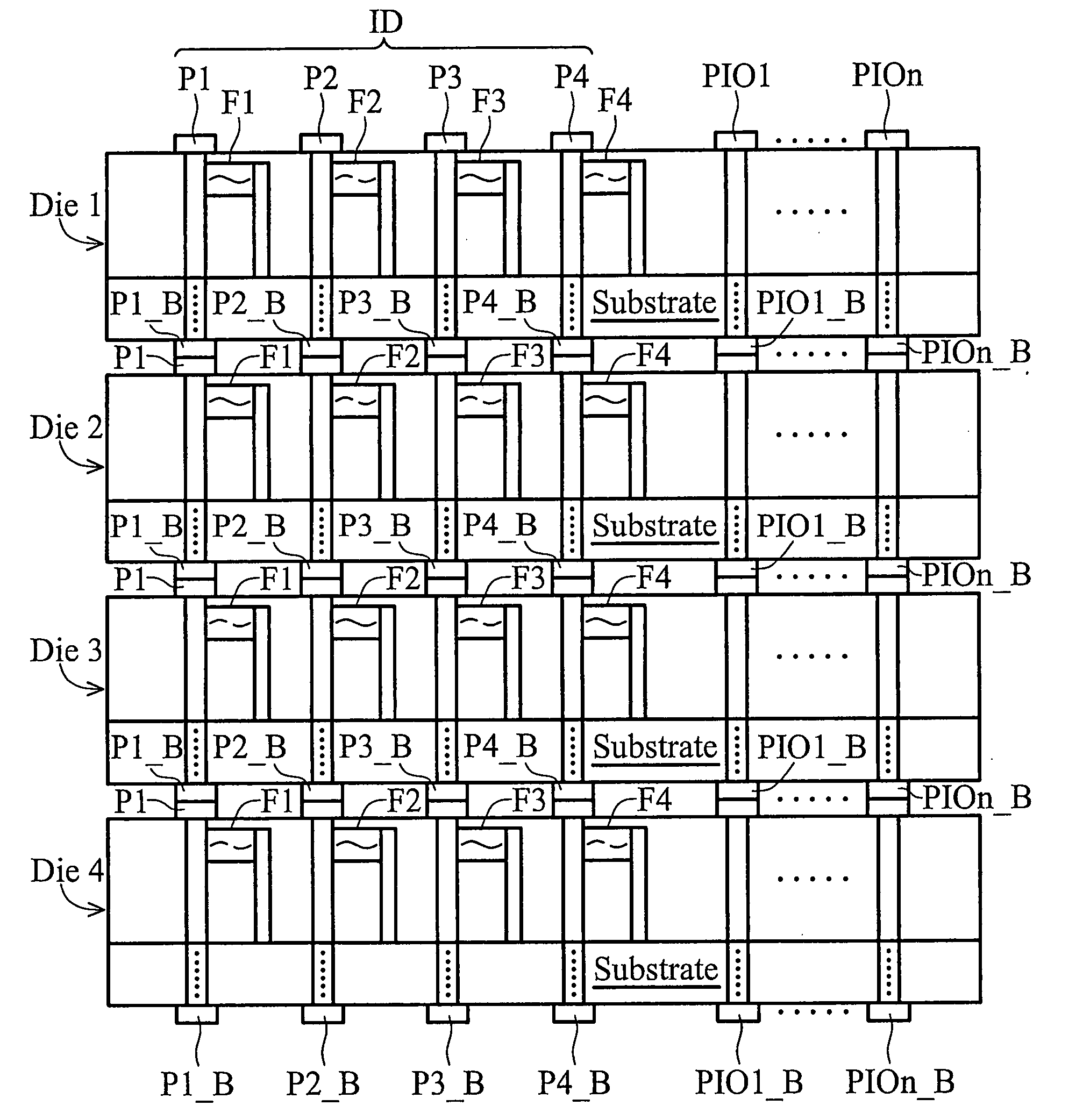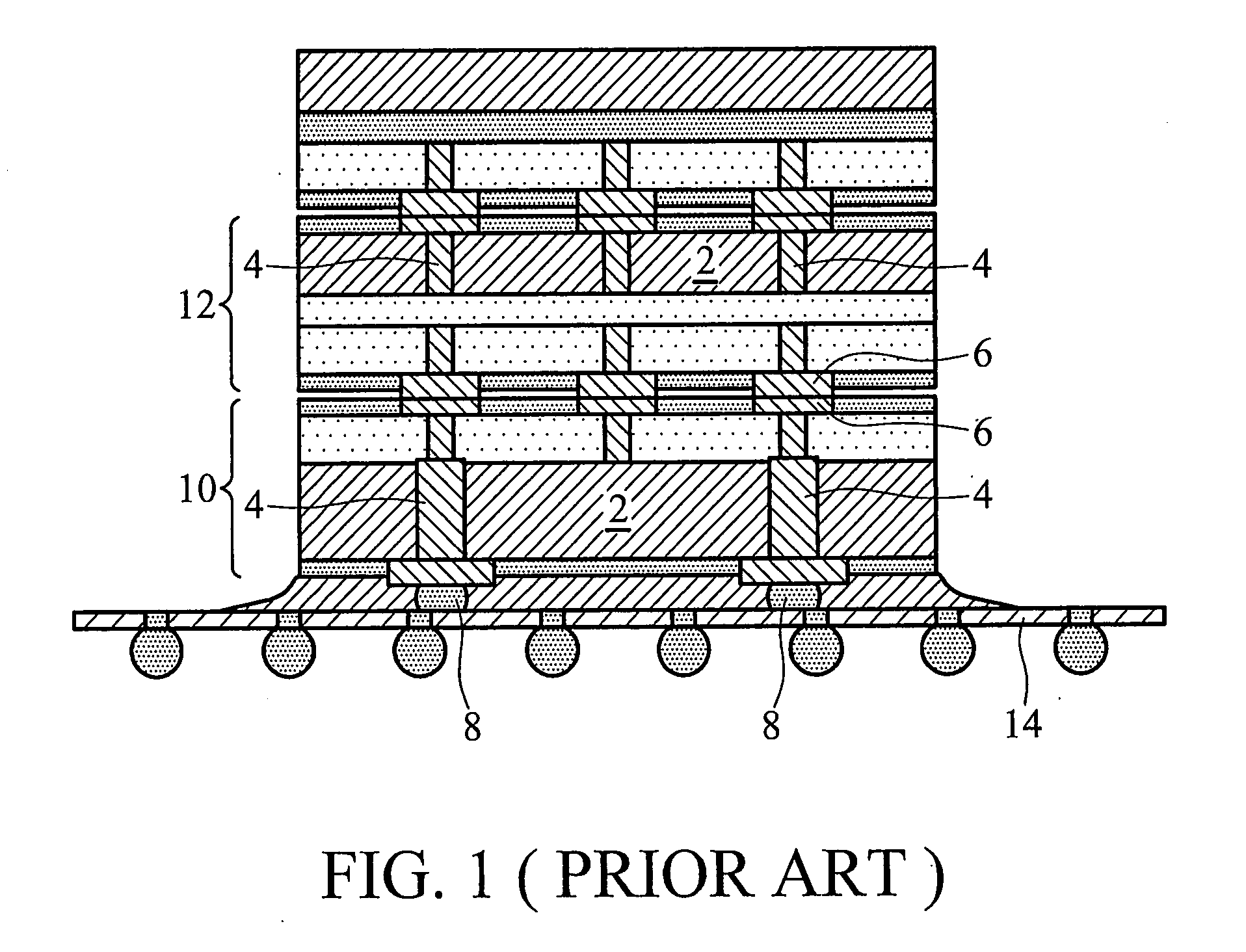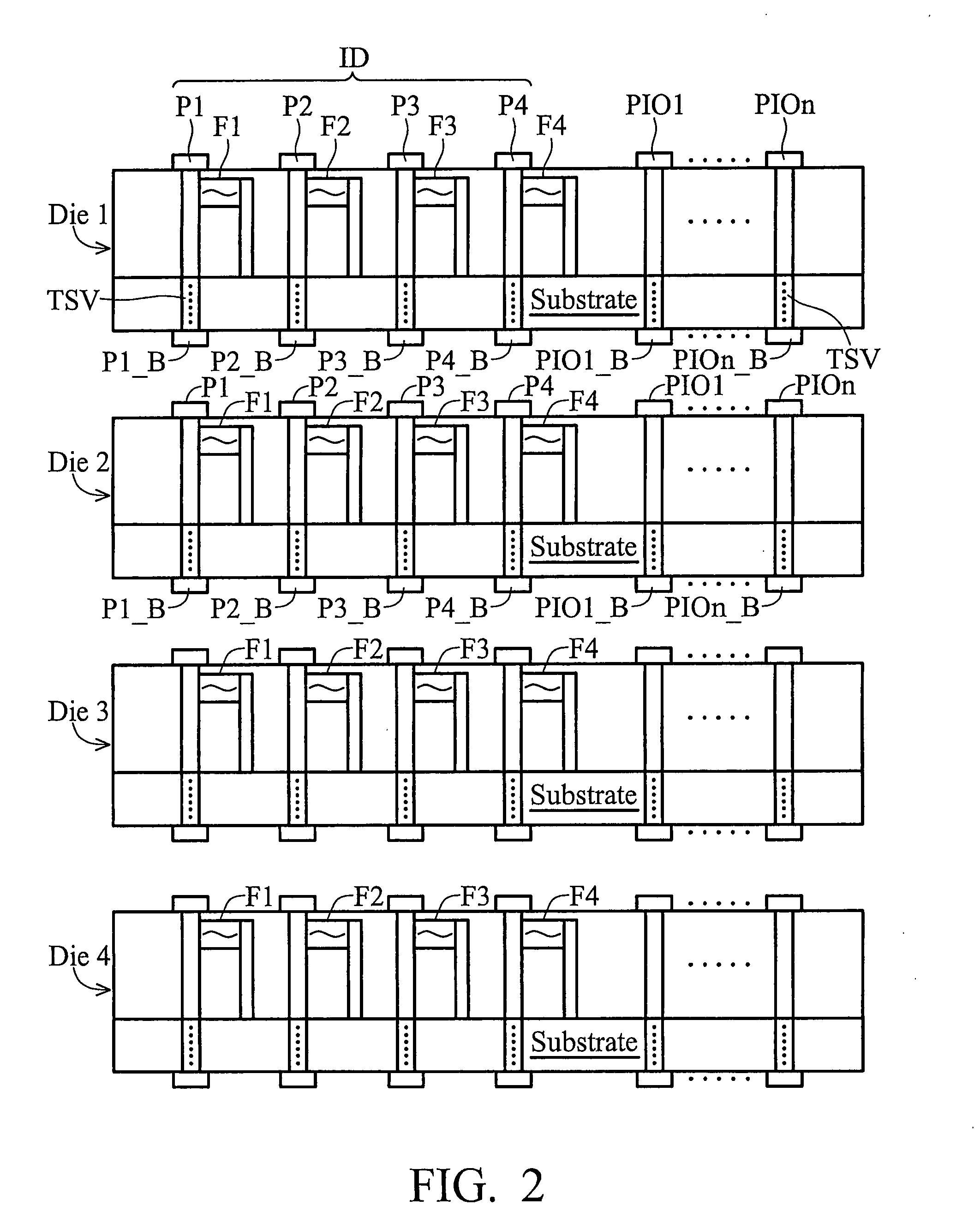Design techniques for stacking identical memory dies
a technology of memory dies and stacking, which is applied in the field of manufacturing and packaging techniques for forming stacking memory dies, can solve the problems of requiring more complex designs, the minimum size needed to make these components, and the physical limitations of the density that can be achieved in two dimensions, so as to reduce the design and manufacturing cost, inventory and cycle time.
- Summary
- Abstract
- Description
- Claims
- Application Information
AI Technical Summary
Benefits of technology
Problems solved by technology
Method used
Image
Examples
Embodiment Construction
[0020]The making and using of the presently preferred embodiments are discussed in detail below. It should be appreciated, however, that the present invention provides many applicable inventive concepts that can be embodied in a wide variety of specific contexts. The specific embodiments discussed are merely illustrative of specific ways to make and use the invention, and do not limit the scope of the invention.
[0021]In the following discussion, an embodiment for stacking four memory dies is provided for explaining the concept of the present invention. FIG. 2 illustrates four identical dies, namely die 1, die 2, die 3 and die 4. Dies 1, 2, 3 and 4 may include commonly used memories, such as static random access memory (SRAM), dynamic random access memory (DRAM), flash memory, magnetoresistive random access memory (MRAM), and the like. Dies 1, 2, 3 and 4 may be dies sawed from a same semiconductor wafer, which includes a plurality of identical memory dies, or from different semicondu...
PUM
 Login to View More
Login to View More Abstract
Description
Claims
Application Information
 Login to View More
Login to View More - R&D
- Intellectual Property
- Life Sciences
- Materials
- Tech Scout
- Unparalleled Data Quality
- Higher Quality Content
- 60% Fewer Hallucinations
Browse by: Latest US Patents, China's latest patents, Technical Efficacy Thesaurus, Application Domain, Technology Topic, Popular Technical Reports.
© 2025 PatSnap. All rights reserved.Legal|Privacy policy|Modern Slavery Act Transparency Statement|Sitemap|About US| Contact US: help@patsnap.com



